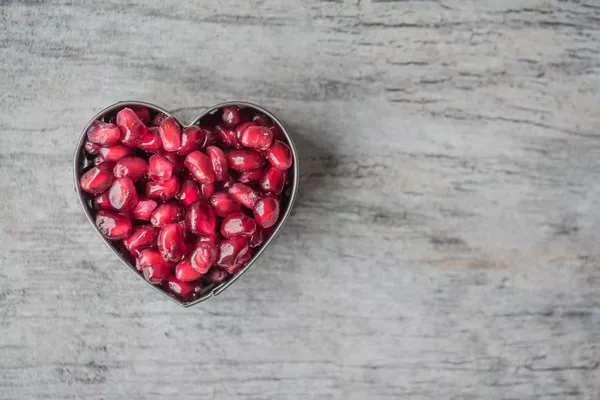Age spots, often referred to as liver spots or sunspots, are small areas of hyperpigmentation that appear on the skin as people age. These flat, brown, black, or gray spots commonly develop on parts of the body that are frequently exposed to the sun, such as the face, hands, shoulders, and arms. Although they are usually harmless and painless, age spots can cause aesthetic concerns and make the skin appear older than it is. Understanding how to reduce or remove these spots has become a top concern for many individuals interested in skincare and aging prevention. This article explores ten effective ways to remove age spots, ranging from natural remedies to professional dermatological treatments.
Age spots are caused by an excess production of melanin, the pigment that gives skin its color. This overproduction is often triggered by ultraviolet (UV) radiation from the sun or tanning beds. While age spots can appear at any age, they are more common in individuals over 40, especially those with fair skin or a history of intense sun exposure. Although completely avoiding age spots is difficult, various treatments can help fade or eliminate them, giving the skin a more even and youthful appearance. Each method has its own advantages and limitations, and the most suitable approach often depends on the size, location, depth, and age of the spots.
Use of Topical Lightening Creams
One of the most accessible and commonly used treatments for age spots is the application of over-the-counter or prescription lightening creams. These creams typically contain ingredients such as hydroquinone, kojic acid, niacinamide, or licorice extract, which work to suppress melanin production and gradually lighten dark spots.
These creams must be used consistently over several weeks or months to see visible results. While hydroquinone is effective, it can cause skin irritation in some people, especially those with sensitive skin. For those concerned about chemical exposure, plant-based alternatives like licorice or bearberry extract are often recommended. Daily use of sunscreen is essential during treatment, as exposure to UV rays can reverse progress and make spots darker.
Chemical Peels
Chemical peels are professional treatments that remove the top layers of skin using acidic solutions. Glycolic acid, salicylic acid, and trichloroacetic acid (TCA) are commonly used to exfoliate the outer layer of the skin, promoting the growth of new, evenly pigmented skin.
Mild peels can be done at home using lower concentrations of acid, but deeper peels should only be performed by licensed dermatologists or aestheticians. Recovery time varies depending on the depth of the peel. Some peeling and redness is normal and usually resolves within a week. Regular treatments can significantly lighten age spots and improve overall skin texture.
Laser Therapy
Laser treatments are one of the most effective professional methods to remove age spots. Lasers target melanin in the skin with concentrated light energy, breaking down the pigment so the body can absorb and remove it naturally. This process typically requires multiple sessions but offers long-term results.
There are different types of lasers, including intense pulsed light (IPL) and Q-switched lasers, each suitable for different skin types and degrees of pigmentation. While the cost is higher than other treatments, many people prefer laser therapy for its precision and speed. It is crucial to consult with a certified dermatologist to ensure the procedure matches your skin condition and goals.
Cryotherapy
Cryotherapy is a treatment that involves freezing the age spots with liquid nitrogen. This process causes the darkened skin to peel off over time, allowing new, lighter skin to grow in its place. It is especially effective for isolated, flat spots and is commonly performed in dermatology clinics.
The procedure is quick and generally well-tolerated, though some discomfort, redness, or temporary blistering may occur. Cryotherapy works best on people with lighter skin and is not typically used for darker complexions due to the risk of uneven pigmentation. Results are usually visible within a few weeks of treatment.
Microdermabrasion
Microdermabrasion is a non-invasive procedure that involves gently exfoliating the skin using a machine that sprays fine crystals or a diamond-tipped wand. This treatment removes the outermost layer of skin and stimulates the production of new skin cells.
While microdermabrasion is not as aggressive as chemical peels or laser treatments, it is a safe and effective option for individuals looking for gradual improvements. Multiple sessions may be required for optimal results. It’s also a suitable maintenance treatment that can enhance the skin’s brightness and reduce mild pigmentation.
Natural Remedies
For those who prefer natural solutions, certain household ingredients may help fade age spots over time. Lemon juice, for example, contains citric acid and vitamin C, both known to lighten pigmentation. Applying fresh lemon juice to age spots daily can gradually reduce their appearance.
Other natural options include apple cider vinegar, aloe vera, green tea extract, and castor oil. These remedies often work by exfoliating the skin or providing antioxidants that help rejuvenate skin cells. While results are generally milder and slower, they carry fewer risks and are ideal for those with sensitive skin or allergies to synthetic products.
Retinoids
Retinoids, derivatives of vitamin A, are powerful compounds used in both prescription and over-the-counter skin care products. They work by increasing cell turnover and stimulating collagen production, which helps fade pigmentation and improve overall skin texture.
Topical retinoids such as tretinoin and adapalene are often used to treat age spots as part of an anti-aging regimen. However, they can cause initial dryness, peeling, or redness. Users should start slowly and combine retinoids with a good moisturizer and daily sunscreen to minimize side effects. With consistent use, retinoids can deliver impressive results over time.
Intense Pulsed Light (IPL) Treatment
Intense Pulsed Light (IPL) therapy is similar to laser treatment but uses broad-spectrum light to target pigmentation. IPL penetrates the skin without damaging the surface and breaks down melanin deposits, allowing the body to naturally eliminate the pigment.
This method is particularly effective for people with fair to medium skin tones and mild to moderate age spots. It also improves redness and uneven skin tone, making it a popular choice for facial rejuvenation. IPL treatments are quick and require minimal downtime, although several sessions may be needed for noticeable changes.
Skin-Lightening Serums
Serums designed specifically to lighten pigmentation often contain a concentrated blend of active ingredients such as vitamin C, alpha arbutin, tranexamic acid, or peptides. These ingredients help inhibit melanin production and promote an even skin tone.
Unlike creams, serums are lightweight and absorb quickly into the skin, making them suitable for layering under sunscreen or moisturizer. Many people incorporate them into their daily skincare routine as a preventative and corrective measure. With long-term use, these serums can significantly diminish age spots and prevent new ones from forming.
Sunscreen and Prevention
While not a removal method in itself, sunscreen plays a crucial role in both the prevention and treatment of age spots. Without proper sun protection, any improvement achieved through treatment can be quickly undone by further UV exposure. Sunscreen with broad-spectrum protection and an SPF of at least 30 should be applied daily, even on cloudy days.
Wearing hats, seeking shade, and avoiding tanning beds are additional strategies to protect the skin. By preventing further melanin production, sunscreen ensures that current age spots fade faster and new ones don’t develop. It’s a foundational step that should accompany every other treatment on this list.
Conclusion
Age spots may be a natural part of aging, but they don’t have to be permanent. With a wide range of available treatments, from natural remedies and skincare products to medical procedures and laser therapy, there is an option for every skin type and concern. The key is consistency, patience, and protection from future damage. By understanding how each method works and how to use it correctly, you can choose the best approach to restore your skin’s clarity and confidence.
Related Topics

































